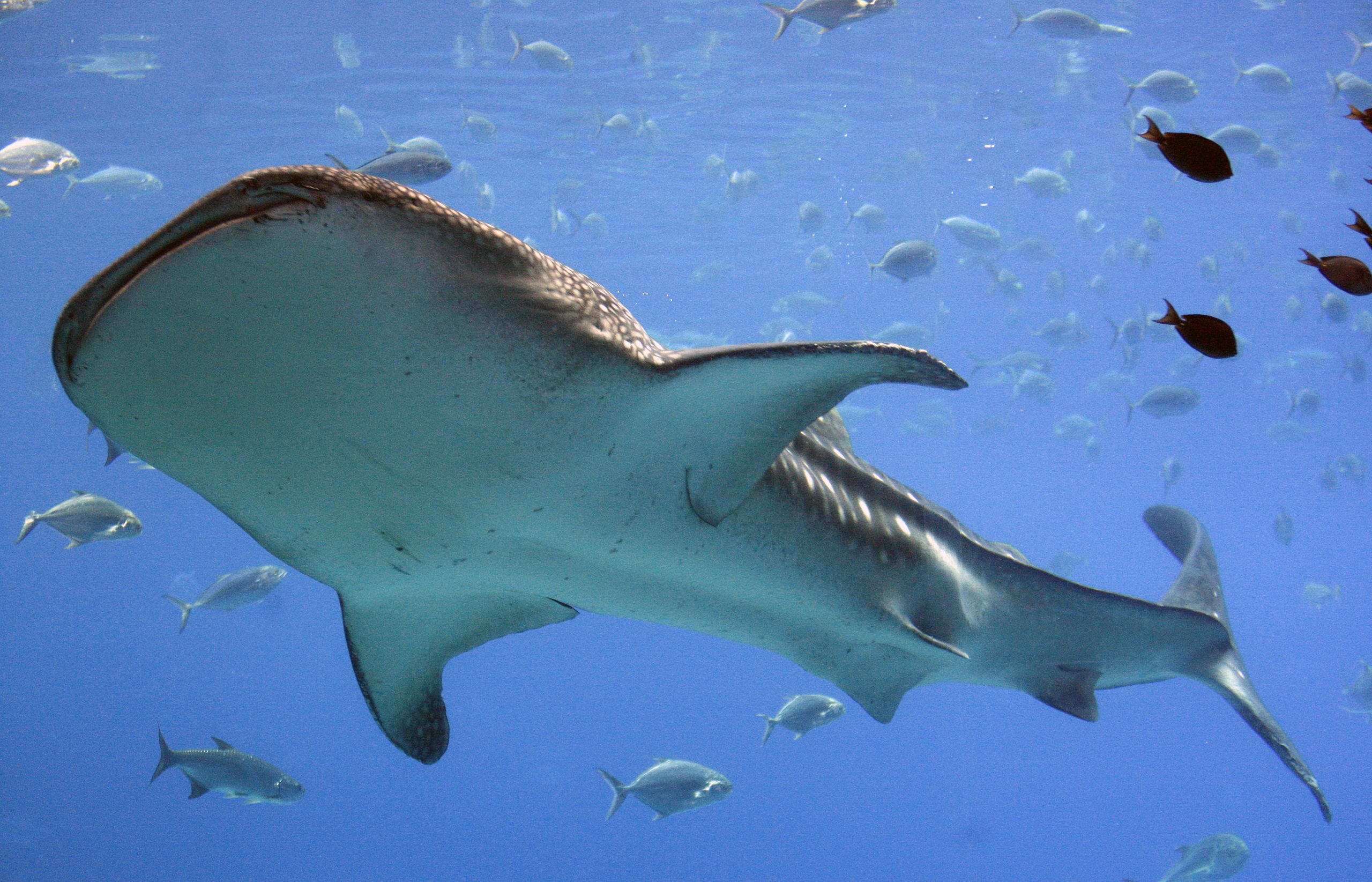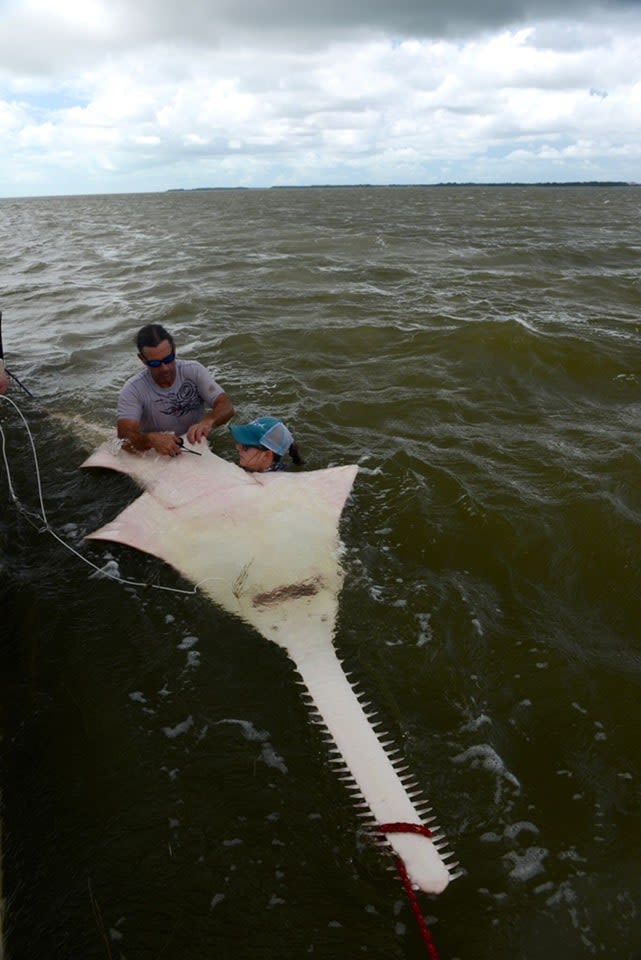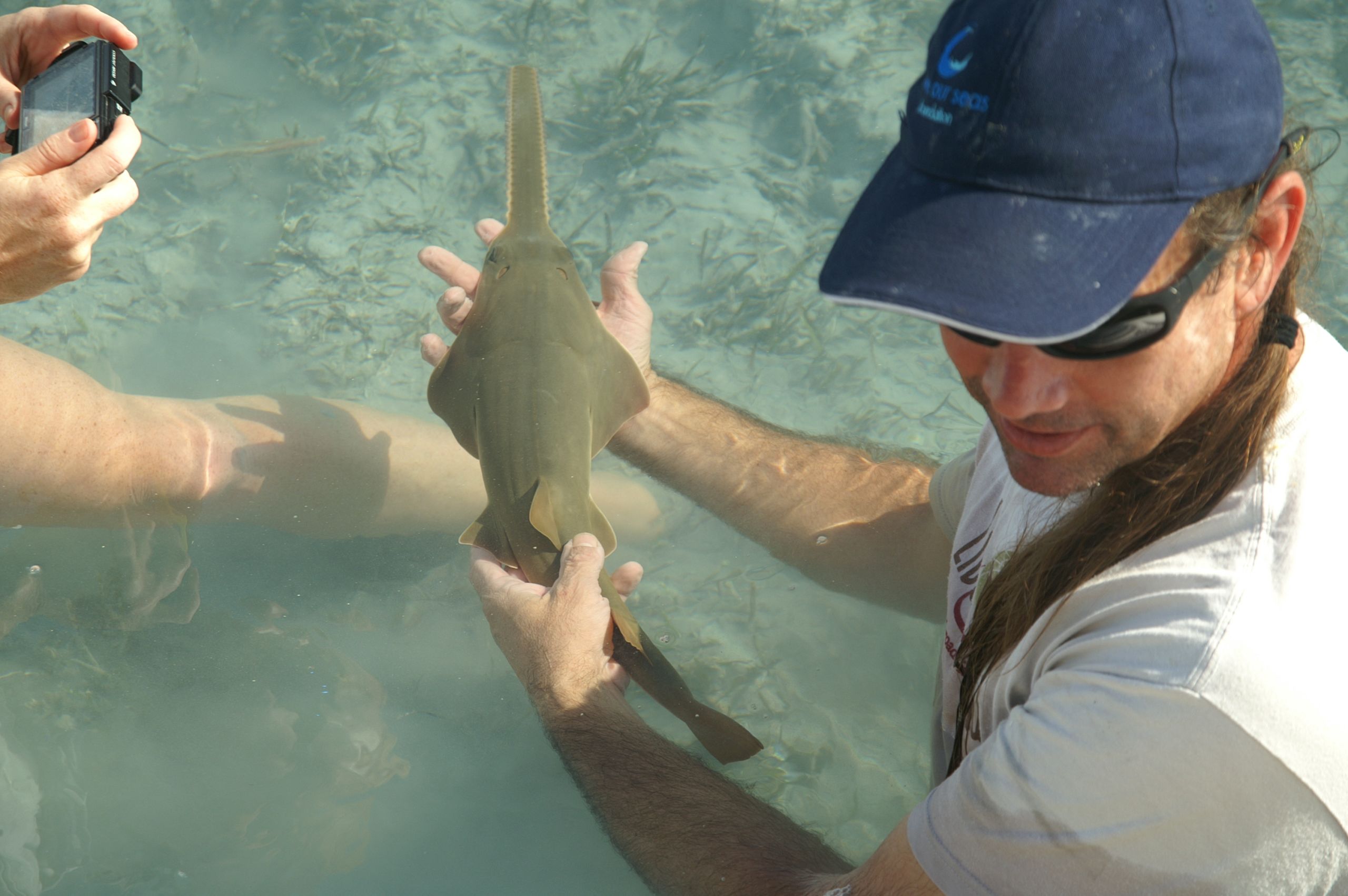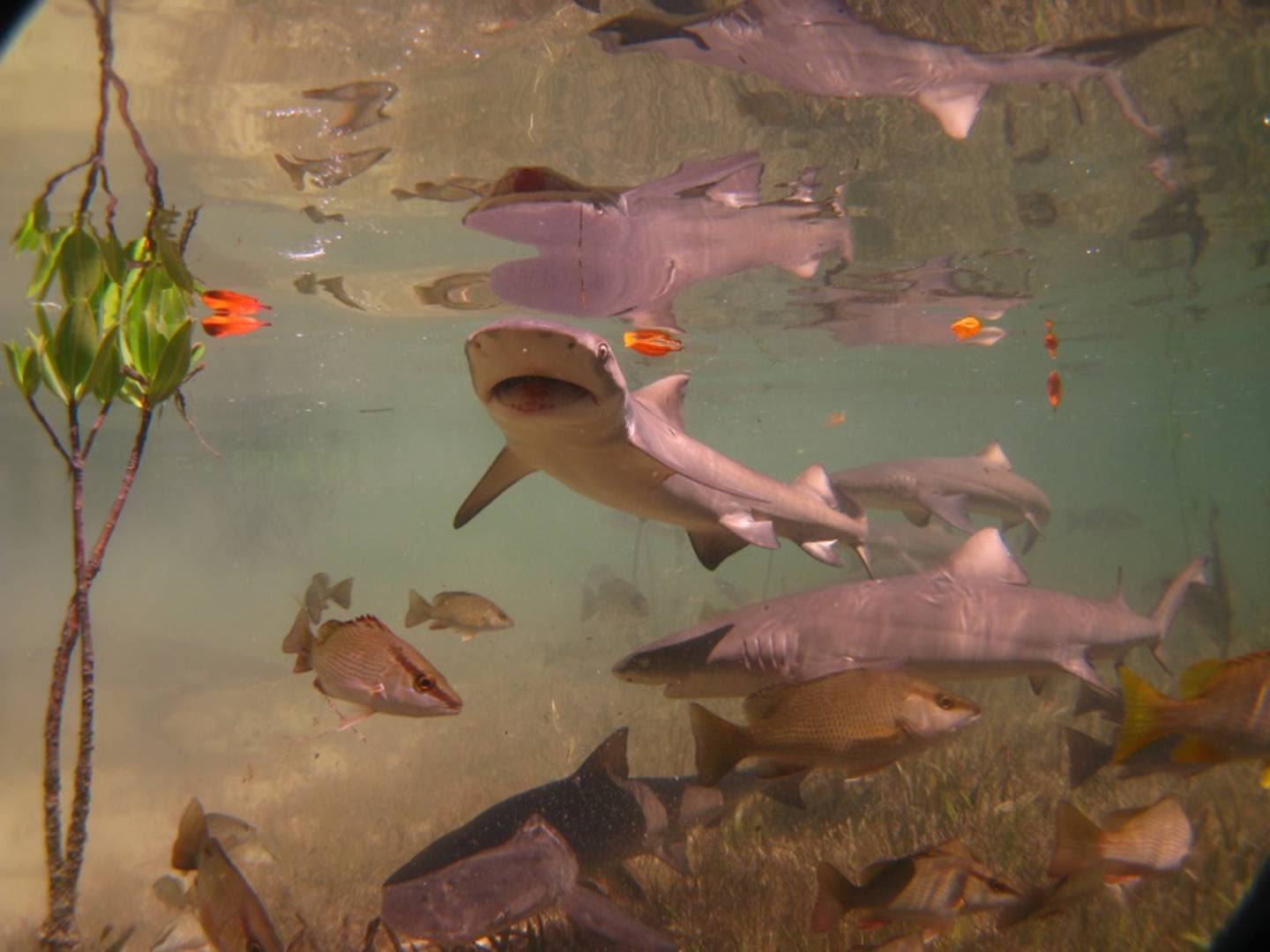Sharks, rays endangered from twin threats of overfishing and public perception
Global shark and ray populations plummeted 71% in the past 50 years as overfishing increased 18-fold – but is the world listening?

While overfishing, habitat loss and climate change are driving species to extinction, many sharks, skates and rays – collectively known as elasmobranchs – face a far greater threat: the media.
Sharks 101: a crash course
Every year, Dr. Chris Lowe, director of the Shark Lab research institute at the University of California, Long Beach, asks his students to list out five words they associate with the word ‘fish’.
“For a fish, I get ‘Dory,’ I get ‘sushi,’ I get ‘salmon,’” said Lowe. “When I say the word ‘shark,’ by and large, somewhere in there is going to be ‘bite,’ there’s going to be ‘scary,’ there’s going to be the word ‘teeth.’”
Many of Lowe’s students picture the distinctive ‘shark-like’ profile of a sand tiger or white shark with its triangular dorsal fin, narrow snout and streamlined profile.
Of the more than 500 species of shark, though, many don’t fit the model.
Striped, spotted, fat, thin, speedy, slow and inhabiting nearly every marine environment, sharks as a group are incredibly diverse - and so are their ecological roles.
“The huge majority of shark species are not apex predators, they’re mid-level predators,” said Dr. R. Dean Grubbs, a marine biologist and member of the IUCN Species Survival Commission Shark Specialist Group. “Sharks actually span a large breadth of the trophic positions in the food webs in marine environments.”
From the bioluminescent dwarf lantern shark that could fit in the palm of your hand to the 20-ton whale shark, sharks fill a variety of niches – but as their populations crash, ocean food webs could be at risk of collapse.
Shark off Midway Atoll: Wyland/NOAA via AP
Whale shark: AP Photo/John Bazemore


Elasmobranchs under threat
Worldwide, as many as three-fourths of oceanic sharks and rays are threatened by extinction, primarily due to overfishing.
Every hour, 10,000 sharks are killed.
That’s a “vast underestimate,” according to the IUCN SSC Shark Specialist Group, owing to spotty international regulations and the killing of many sharks and rays as unwanted “bycatch" by other fisheries.
Many sharks and rays are especially vulnerable to overfishing because of their slow life cycles: some species take years or even decades to mature and produce few young in each brood, according to the Smithsonian Institute.
The Greenland shark, the longest-lived vertebrate known to science, matures at 150 years old, while the endangered devil and manta rays produce just one pup every one to three years.
More concerning to conservationists, though, are the gaps in scientific knowledge of shark and ray life cycles.
The IUCN Red List, which categorizes species based on their risk of extinction, has deficiencies in the data of more than 40% of shark and ray species.
“Even today we don’t know the basic biology of the vast majority of shark species,” said Grubbs. “We don’t know how long it takes them to mature, we don’t know how many pups they have, we don’t know enough about their ecology, their habitat associations, and we may also not know enough about how often and in what quantity they get captured in different fisheries.”
Lack of understanding can impair conservation efforts for the species.
Without the means to manage sharks, skates and rays on a species-specific basis, the U.S. manages them within groups – but, says Grubbs, “Within those groups, you have a wide range of life history.”
Thus, fast-breeding, resilient species are fished at the same rate as species that may take 20 years to mature, with devastating results on less hardy populations.
In short, many sharks, skates and rays are scientific enigmas. Why? The answer lies in public perception.

In this Wednesday, May 25, 2016 photo, a replica of the great white shark head used in the movie "Jaws" is displayed at the Atlantic White Shark Conservancy's Chatham Shark Center in Chatham, Mass. Officials and researchers from Cape Cod to the Carolinas are looking at responses ranging from the high-tech to the decidedly low-tech as they deal with a growing great white shark population. (AP Photo/Philip Marcelo)
In this Wednesday, May 25, 2016 photo, a replica of the great white shark head used in the movie "Jaws" is displayed at the Atlantic White Shark Conservancy's Chatham Shark Center in Chatham, Mass. Officials and researchers from Cape Cod to the Carolinas are looking at responses ranging from the high-tech to the decidedly low-tech as they deal with a growing great white shark population. (AP Photo/Philip Marcelo)
Elasmobranchs and the media
When Lowe plays the association game with his students, one point becomes clear: sharks are feared.
Horror films, mockumentaries and even some mainstream media channels malign sharks as soulless, revenge-seeking killers.
“They’re basically playing off the whole ‘Jaws’ phenomenon where it is very easy to make people scared of sharks,” said Lowe.
Although it may seem harmless, media mischaracterization increases shark mortality.
After Jaws was released in 1975, shark hysteria quickly popularized amateur shark hunting and turned the public against their conservation. Dozens of films and shows have followed, which, even when campy or unrealistic, instill the idea that sharks are dangerous and vicious.
Shark biologists cry foul: the Pelagic Shark Research Foundation wrote, “The word ‘shark’ almost invariably raises sinister, alarming images in the minds of most people. The average shark is neither menacing nor malevolent.”
Most species pose no threat to people, and even sharks capable of harming humans prefer more natural prey.
Chances are higher of winning the lottery or being killed by cows than bitten by a shark, according to the International Shark Attack File.
“I tell all my students, ‘Look, a shark is just another fish,’” Lowe said.
However, media misinformation persists in the public consciousness, causing a lack of public support and funding for vital elasmobranch research.
While sharks are generally misunderstood, skates and rays face critical threats to their survival - but are often overlooked.
Meet the sawfish.
The sawfish is one of the most endangered elasmobranchs – and also among the strangest.
Although classified as a ray, the sawfish looks more like an example of extraterrestrial life, with a long, toothy rostrum and a gaping pink mouth on its underside. All five species are classified as endangered or critically endangered by the IUCN, making the sawfish one of the rarest animal families.
Sawfish are a primary example of “non-charismatic fauna,” or animals that aren’t cute and cuddly. While many skates and rays are more endangered than giant pandas or elephants, they live in complete obscurity.
The United States is home to the smalltooth sawfish, which used to range in warm waters along the entire western and eastern Atlantic. Now, Florida is one of its last remaining strongholds as sawfish are caught as bycatch in gill nets and shrimp trawls.
“Gill nets in Florida have been illegal since the ‘90s, which is probably why we still have sawfish in Florida, but we think shrimp trawling is the primary source of mortality [here],” said Grubbs.
Grubbs and his fellow researchers are working to reduce the risk of bycatch to the last American sawfish population by determining where and when the animals are caught in the greatest numbers. Armed with data, the team hopes to persuade local authorities to limit trawling that poses the highest threat.
However, the survival of the enigmatic sawfish ultimately depends on public support – which is difficult when few know it exists.

Researchers with an adult sawfish. Photo courtesy of Dr. R. Dean Grubbs
Researchers with an adult sawfish. Photo courtesy of Dr. R. Dean Grubbs

Dr. Grubbs with a juvenile sawfish. Photo courtesy of Dr. R. Dean Grubbs
Dr. Grubbs with a juvenile sawfish. Photo courtesy of Dr. R. Dean Grubbs

A female sawfish. Photo courtesy of Dr. R. Dean Grubbs
A female sawfish. Photo courtesy of Dr. R. Dean Grubbs
What’s next
“Strict prohibitions and precautionary science-based catch limits are urgently needed to avert population collapse, avoid the disruption of ecological functions and promote species recovery,” wrote the authors of the Nature study published this week.
Easier said than done.
Grubbs and Lowe said international cooperation will be necessary to take the next step in protecting elasmobranchs from overharvesting. Many species are highly migratory, leaving them vulnerable to differing regulations across their range.
But the scientists said citizens have a role to play, too.
“I would want the public to just try to educate themselves, be informed on what they’re eating, what fisheries they’re supporting, and try to support those that are sustainably managed,” said Grubbs.
People can protect elasmobranchs by choosing sustainably sourced seafood; one resource is the Monterey Bay Aquarium app, which provides regional guides for seafood consumers.
“For a while there it was not clear whether there was even such a thing as a sustainable shark fishery, and now we know that it can be,” said Lowe. “We have close to 9 billion people on the planet to feed. Fish are a great source of protein. We just have to do it sustainably.”

Juvenile lemon sharks in the Bahamas. Photo courtesy of Dr. R. Dean Grubbs
Juvenile lemon sharks in the Bahamas. Photo courtesy of Dr. R. Dean Grubbs









